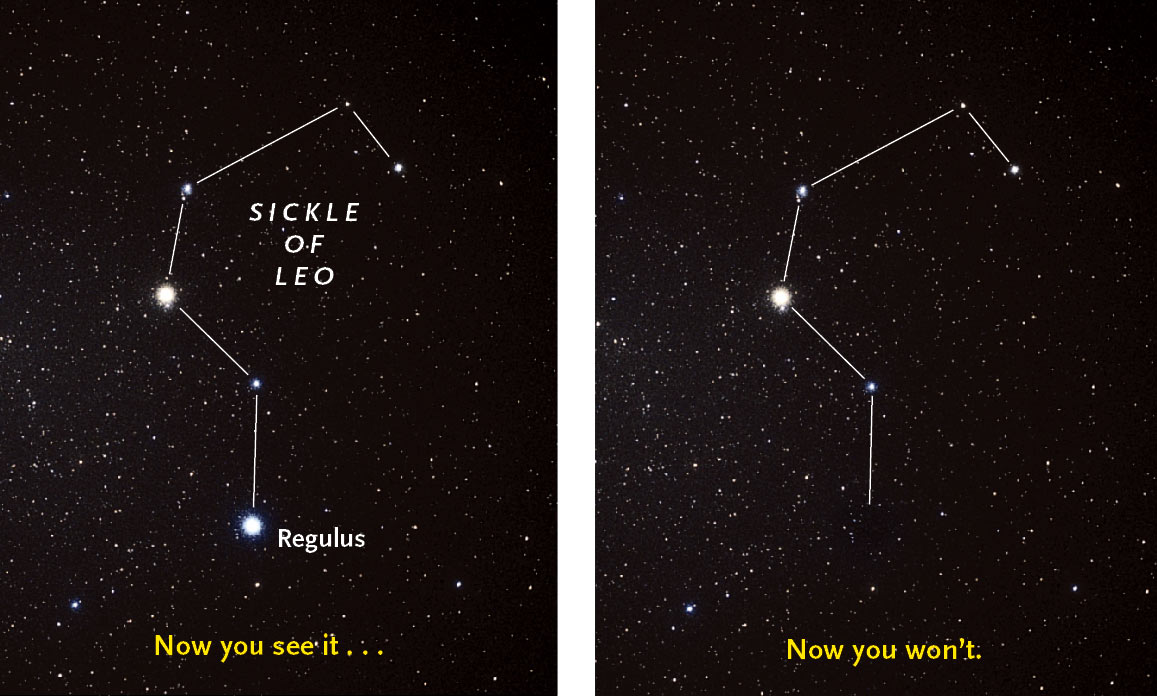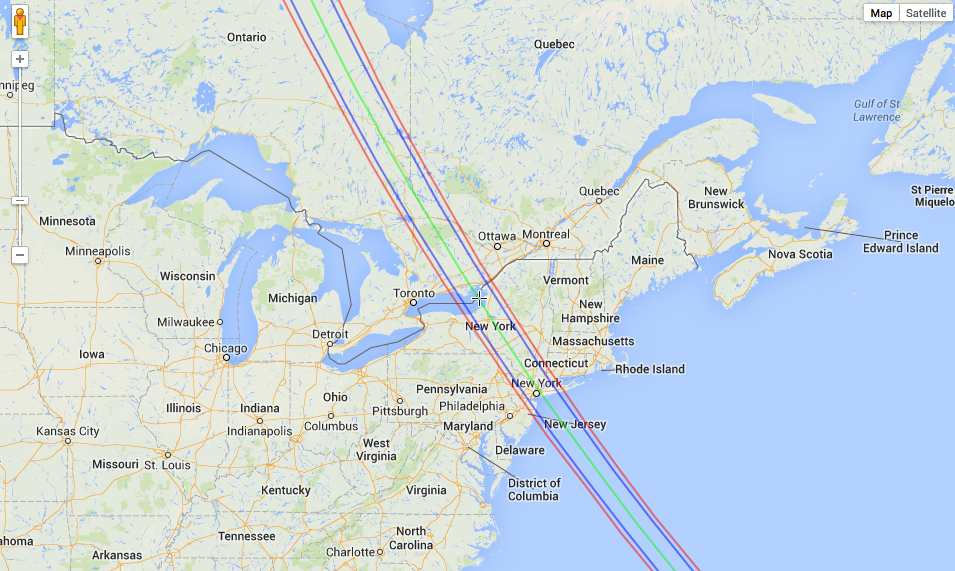Rare Sight: Giant Asteroid Eclipses Bright Star Regulus This Week

A rare cosmic sight will grace the night sky this week when the huge the asteroid Erigone passes in front of the bright star Regulus, as seen from Earth, on the night of March 19 and 20. The event, which is only visible from a narrow swath across the northeastern North America, offers a celestial treat for skywatchers there, and citizen scientists are wanted to help track the event.
The asteroid Erigone (eh-RIG-uh-nee) will eclipse the star Regulus for between 14 seconds and up to two minutes (the time depends on viewing location) depending on where you are — and will take place around 2:06 a.m. EDT (0606 GMT). It will be visible in New York City as well as parts of Long Island, New Jersey, Connecticut, upstate New York, and Ontario.
You can watch the asteroid occultation of Regulus live online, weather permitting, courtesy of the online Slooh skywatching website, beginning at 1:45 a.m. EDT (0545 GMT) on Thursday. You can also see the asteroid and Regulus webcast on Space.com.
Bright star winks out
Regulus is the brightest star in the constellation Leo and is bright enough to spot with the naked eye. To find it, go outside around 2 a.m. and look at the moon. Put your arms out straight out on either side of your body. In this position, Regulus is directly above the observer's right hand at about the same height in the moon.
"Regulus shines right through moonlight and light pollution that's in the sky — even the light pollution over a city like New York," said Alan MacRobert, a senior editor at Sky & Telescope magazine, in a statement. "Just be sure to shield your eyes against any glary lights, and Regulus should be easy to find."
This event is called an occultation, which comes from the Latin word for "hide." In a cosmic first, this is the only time yet that an asteroid occultation occurred in such a populous region.
Breaking space news, the latest updates on rocket launches, skywatching events and more!
Citizen science search
The International Occultation Timing Association is asking amateurs to keep tabs on when the star disappears from view, and for how long. This can be recorded with your eyes only, or by using a DSLR camera in movie mode, or even fancier equipment. More on how to participate is available at occultations.org/Regulus2014.
Once the results are tabulated from various locations, astronomers can better estimate how big Erigone is, and its shape. This is a calculation that is usually not possible unless a spacecraft whizzes close by the asteroid itself.
The times of the occulation depend on where you are located. Generally speaking, it will be at 2:06 a.m. in New York City, 2:07 a.m. in upstate New York, and 2:08 a.m. north of Lake Ontario.
Erigone is about 45 miles (72 kilometers) across and orbits the sun about 110 million miles (117 million kilometers) from Earth, in the asteroid belt that is roughly between Mars and Jupiter. The asteroid is about 26,000 times fainter than Regulus (magnitude 12.4), so it can't be seen with amateur telescopes.
Even if you're not directly in the line of fire, so to speak, the consortium encourages anyone between the Carolinas to Nova Scotia to Winnipeg to keep an eye out. That's because if Erigone has a smaller asteroid with it, the other asteroid could also blot out Regulus sometime between 2 a.m. to 2:12 a.m. EDT (0600 to 0612 GMT).
Editor's note:If you snap a great photo of rare asteroid occultation of the star Regulus, or any other night sky view, and would like to share it with Space.com for a story or gallery please send comments and images to managing editor Tariq Malik at: spacephotos@space.com.
Follow Elizabeth Howell @howellspace, or Space.com @Spacedotcom. We're also on Facebook and Google+. Original article on Space.com.

Elizabeth Howell (she/her), Ph.D., was a staff writer in the spaceflight channel between 2022 and 2024 specializing in Canadian space news. She was contributing writer for Space.com for 10 years from 2012 to 2024. Elizabeth's reporting includes multiple exclusives with the White House, leading world coverage about a lost-and-found space tomato on the International Space Station, witnessing five human spaceflight launches on two continents, flying parabolic, working inside a spacesuit, and participating in a simulated Mars mission. Her latest book, "Why Am I Taller?" (ECW Press, 2022) is co-written with astronaut Dave Williams.


